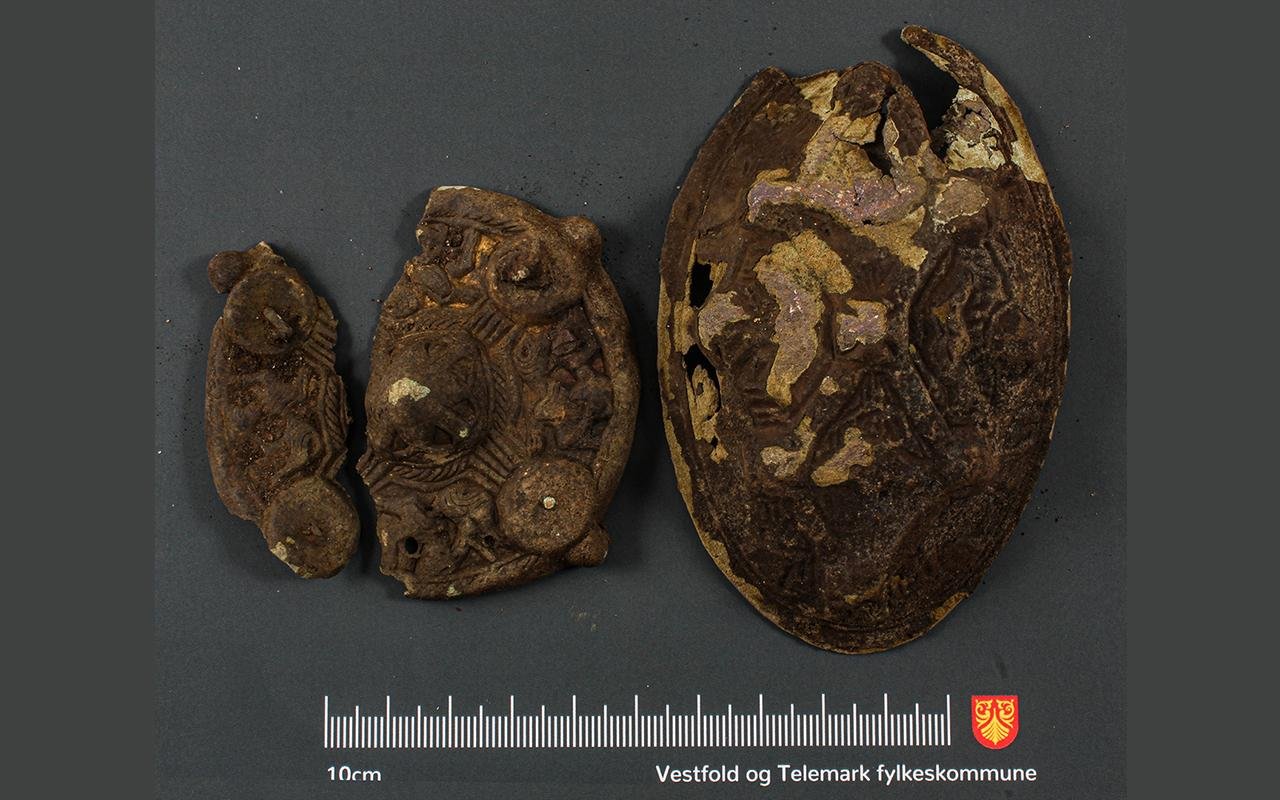A family in Norway, while searching for a lost earring in their yard on the island of Jomfruland, unearthed a treasure trove of Viking-era artifacts that date back over a millennium.
 Credit: Rune Nordseter/Kulturarv, Vestfold and Telemark County Council
Credit: Rune Nordseter/Kulturarv, Vestfold and Telemark County Council
The Aasvik family’s quest for a lost gold earring took an unexpected twist when they decided to employ a metal detector in their garden. Instead of the missing earring, the detector led them to the discovery of two significant Viking relics. These artifacts, believed to be part of a ninth-century Viking burial, include an intricately engraved bowl-shaped buckle and another object, likely an oval-shaped brooch. Both items were crafted from bronze and once adorned with gold.
The discovery was made under a large tree in the center of the family’s garden on the island, off Norway’s south coast. Archaeologist Vibeke Lia, an expert with the Vestfold and Telemark County Council, believes these two items were used in the ninth century to fasten the shoulder straps of a halter dress at the front.
She confirmed that these finds are potentially the remains of an aristocratic Viking woman’s grave dating back to around 800 CE. Such grave sites were known to have contained personal adornments and valuables.
This incredible find carries particular significance for researchers, as it marks the first concrete evidence of a Viking-era existence on Jomfruland. Prior to this discovery, researchers’ knowledge extended primarily to the Middle Ages, with scant evidence of Viking settlements.
This remarkable find was promptly reported to local authorities, ensuring the proper preservation, study, and sharing of these precious historical artifacts. While it remains uncertain whether the site will be excavated due to its potential status as a grave, the artifacts themselves provide significant insights into the Viking Age.
The family’s discovery aligns with recent occurrences of unexpected Viking-related findings in Norway. On the southern island of Rennesøy, amateur archaeologist Erlend Bore made headlines with his metal detector, uncovering a cache of treasures, including pendants, rings, and gold pearls, believed to date from around CE 500. This find was described as “the gold find of the century in Norway” by experts.
It is worth noting that Norwegian law strictly prohibits individuals from keeping artifacts predating 1537 and coins predating 1650, considering them state property. These regulations are in place to preserve the nation’s historical heritage for the benefit of all.





